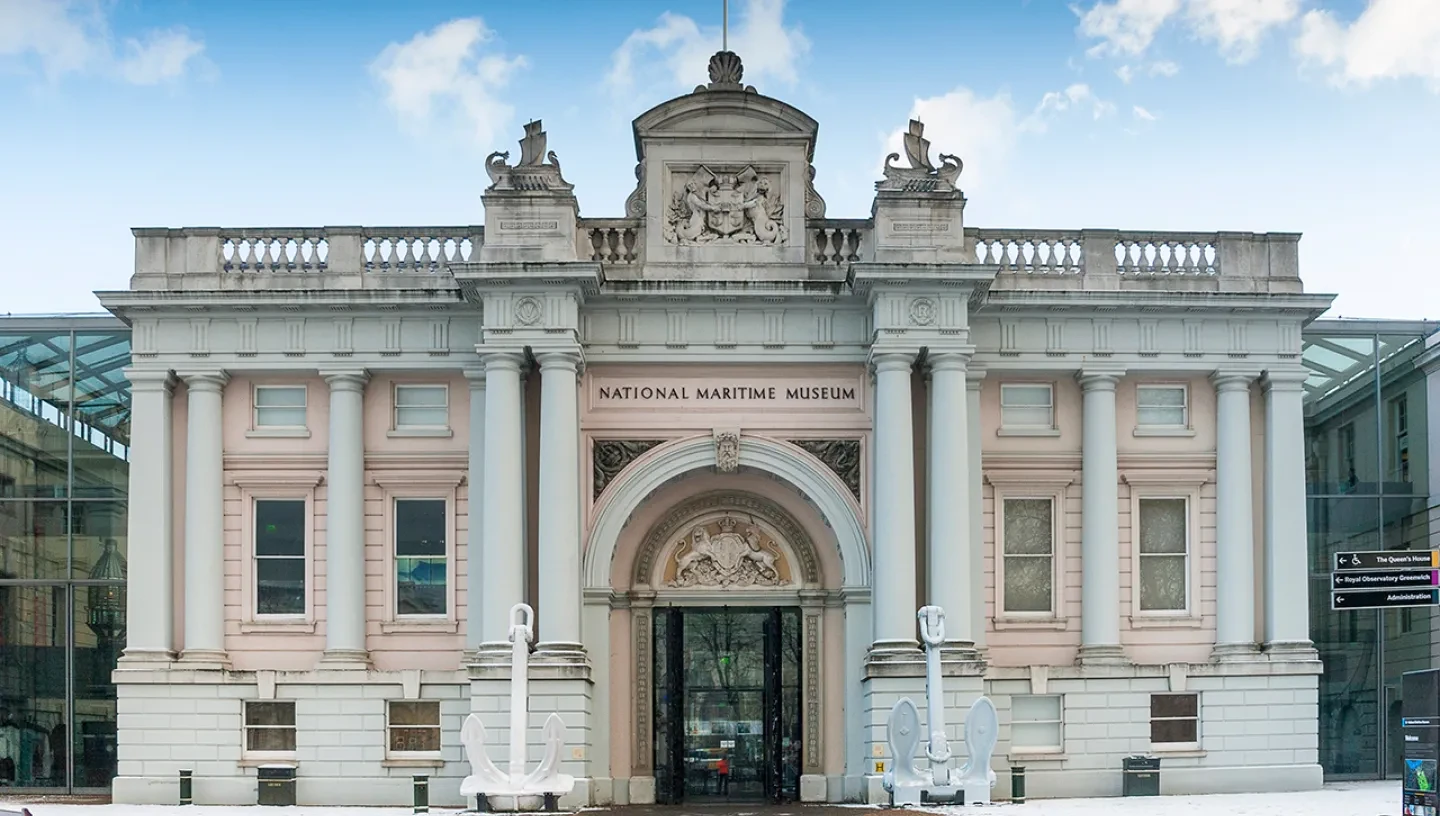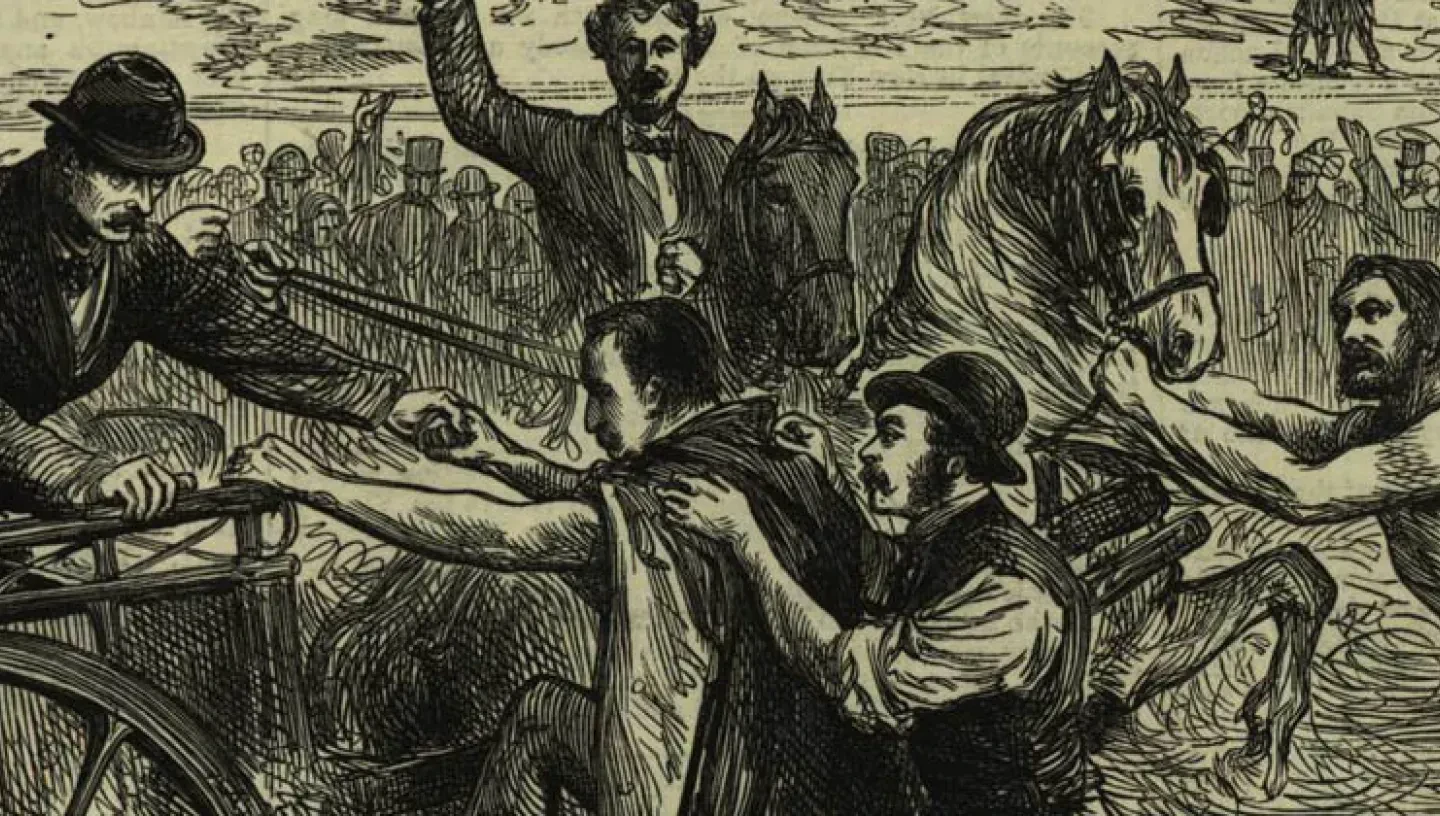
Captain Matthew Webb was the first person to swim across the English Channel unaided. Using our library and archive collections we research the life of this extraordinary man.
Matthew Webb was a merchant mariner best remembered today not for his sailing career but for his swimming prowess.
His most famous feat in his chosen sport ended at At 10.41 on the morning of 25 August 1875, when Webb, a stocky man of medium height, collapsed forward, exhausted, as his feet touched the sands on the beach at Calais.
He was tired and weak and suffering from delirium, but Captain Matthew Webb had just succeeded in the then unprecedented feat of swimming the English Channel unaided. He had been in the water nearly 22 hours.
Among the Caird Library and Archive’s collection are a number of items which allow us to piece together some of his Webb’s career both on and in the water.
Matthew Webb's early life
Webb was born in Dawley, Shropshire, on 19 January 1848, the second son of a doctor. He was able to swim by the time he was seven.
At age 12, he left school and joined the merchant service. His applications to be examined for second mate and first mate, contained in his certificate file in the Caird Library and Archive, reveal that Webb was based on the SS Conway from 1860-62, and then served as an apprentice on the Cavour and Hampden.
Whilst on a later voyage (on the Russia), one of his crewmates fell overboard mid-Atlantic during a gale and Webb dived in after him. Webb was in the water for 37 minutes, coming close to being lost.
He failed to find the missing sailor, but for his attempt he was awarded a silver medal by the Liverpool Humane Society and the Stanhope Gold Medal by the Royal Humane Society.
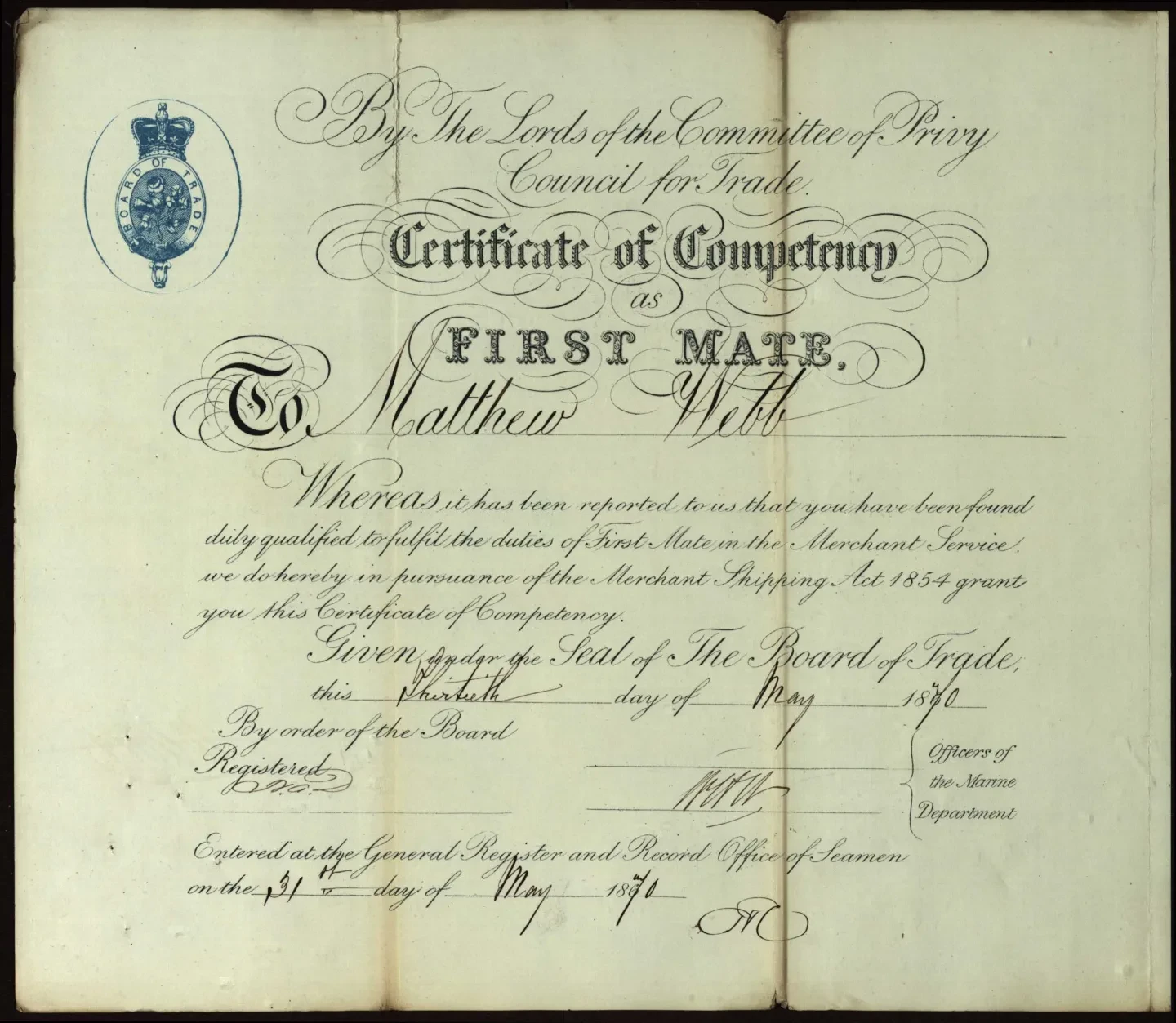
Webb was clearly already a confident swimmer when during the early 1870s the idea of swimming the Channel took hold of him. It was at around this time that he became master of the Emerald. There is no master’s certificate for him in his certificate file, but we find him in charge of the Emerald on a Crew List dating from 1875.
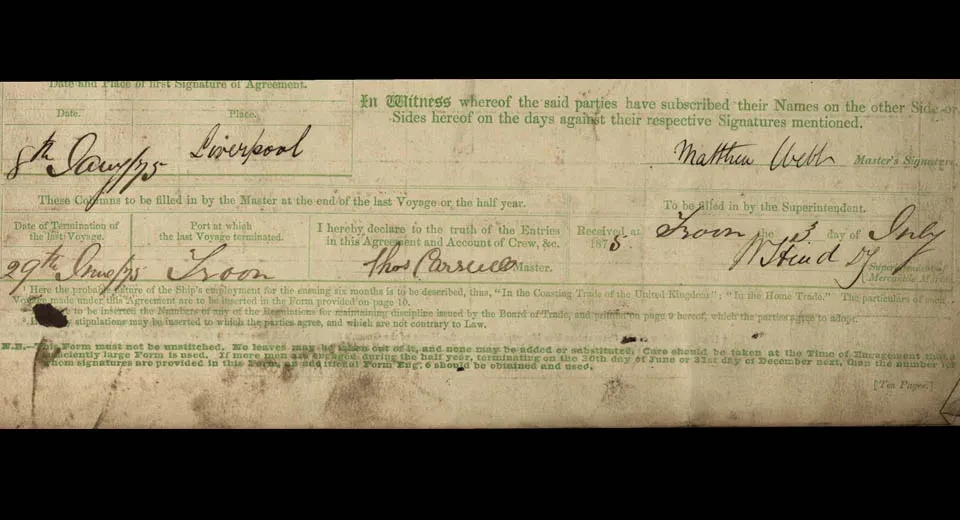
Swimming the Channel
Webb announced his intention to swim the Channel in 1874 and began training, swimming off Dover for several hours at a time and later training at Lambeth Baths.
After one failed attempt at the crossing, Webb tried again on 24 August 1875. Coated in porpoise grease, he dived off Admiralty Pier, Dover, at a little before 1 p.m. The Illustrated London News covered the story, sending its artist on one of the boats accompanying Webb, but taking much of its text from an issue of the Illustrated Sporting and Dramatic News, which reported that Webb swam ‘sturdily with the ebb till a quarter to three, when he drank a cup of good ale’.
He had some more ale later and at around 6.30 that evening some ‘beef tea’. After nightfall, Webb was stung by a jelly fish, and the tide turned, bearing him south-west. At 11 p.m., he was about eight or nine miles from Calais. By dawn, runs the report,
Cape Grisnez appeared almost within his grasp, when the flood-tide set in, at five, and drifted him eastward, towards Calais. An hour or so later there sprang up a breeze, which ruffled the sea and dashed the waves in the face of Captain Webb …
After 9 a.m., the crew of the mail boat Maid of Kent rowed out, and, positioned windward, sheltered Webb, who finally made it to land at 10.41. He was helped ashore and boarded a waiting carriage which conveyed him to the Hotel de Paris, Calais.
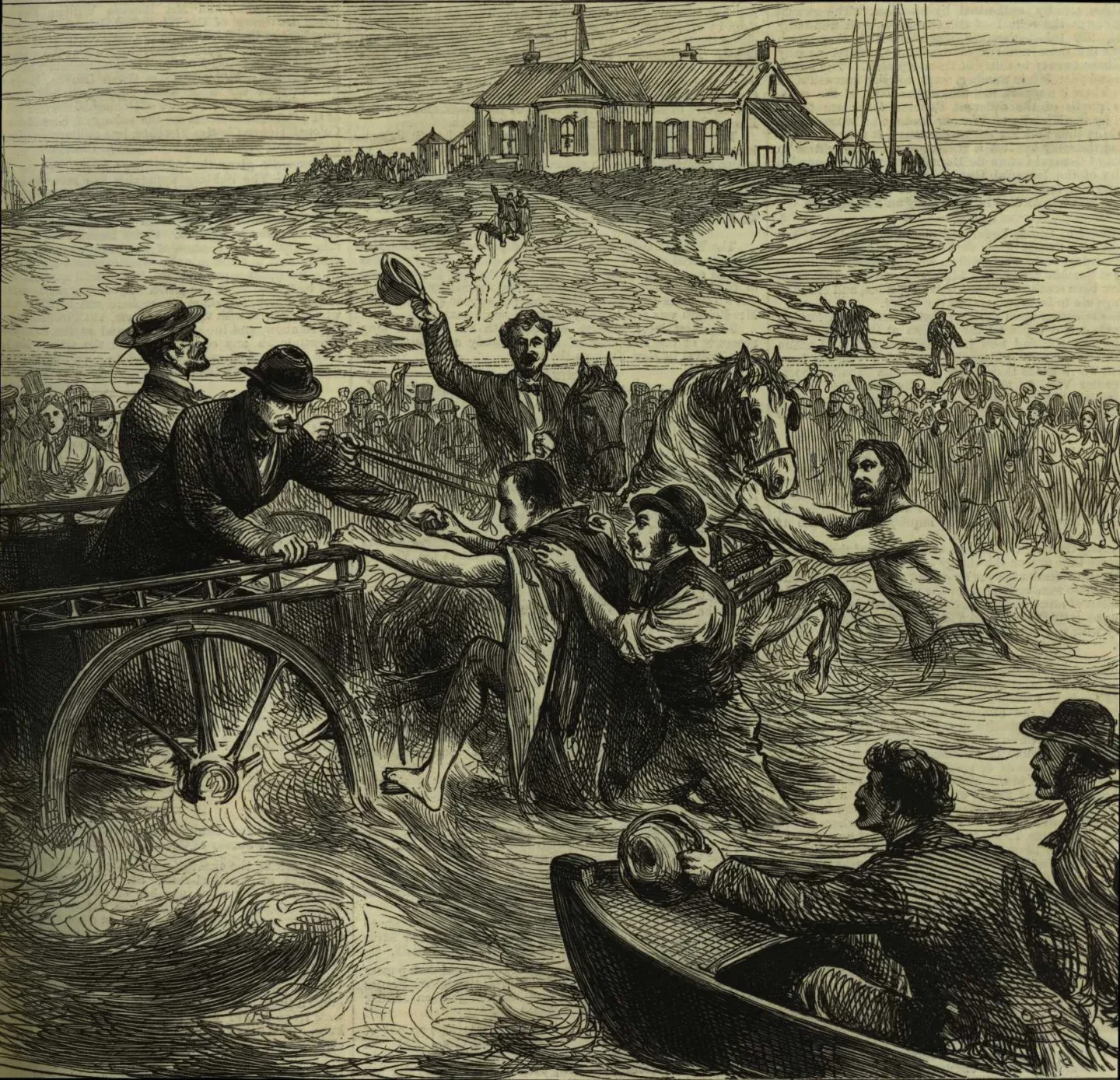
Webb returned home to a hero’s welcome, gave lectures and took part in endurance swimming events – even spending 60 hours in a glass tank at the Royal Westminster Aquarium – but how could he beat swimming the Channel?
Webb’s end came at Niagara Falls in 1883. He was attempting another first – to swim the whirlpool rapids – but was crushed by the sheer weight of the water. The Illustrated London News reported the death of ‘the bravest and greatest of swimmers’ in its issue of 28 July.
Webb’s Channel crossing remained unique for over 30 years. Although several others made the attempt, it was not until 1911 that Yorkshire-born Thomas William Burgess became the second person to succeed. Of course more have followed, but Webb’s story continues to appeal, perhaps because he was not only the first to succeed in this unusual form of maritime endeavour, but also because of his reckless and ultimately fatal bravery.
If you would like to learn more about Matthew Webb’s swimming feats, his career as a mariner and the vessels he served on, the following items are amongst those you can search for on the Caird Library catalogue
Sources:
The Illustrated London News (4 September 1874, 28 July 1883 (Extra Supplement), 4 August 1883)
Jarvis, Margaret. Captain Webb and 100 Years of Channel Swimming, Newton Abbott: David & Charles, 1975 (Library ID: PBD6810)
Lloyd’s Register
The Crew List for the Emerald (official number 58773) January to June 1875 can be ordered via the following page
Webb’s first and second mates’ certificates (number 83962) can be viewed online via Ancestry or ordered via the following page
